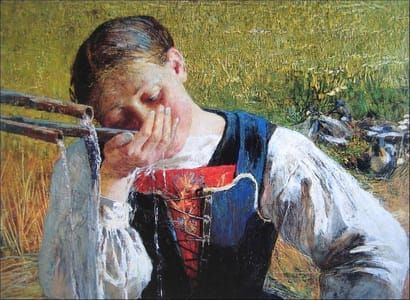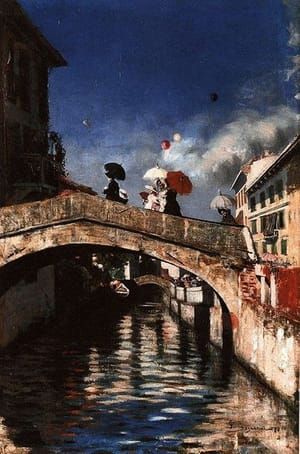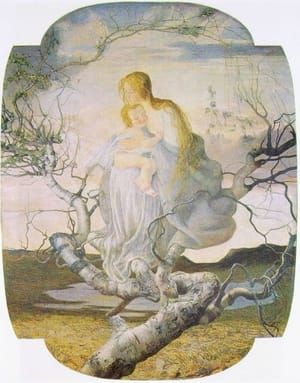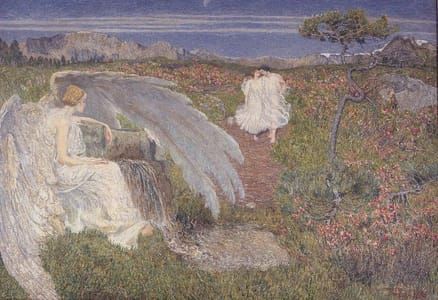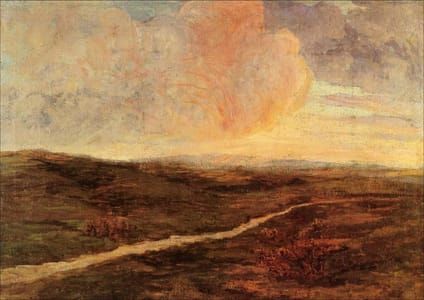

Untitled
Giovanni Segantini
he Swiss are generally not considered to be particularly strange with respect to their personality traits. If we are to come up with something approaching an acceptable stereotype, it would likely be one of an industrious, methodical people, living in an environment where basic survival is not easy. With plenty of time on their hands due to long periods of winter, notwithstanding Harry Lime’s insult in “The Third Man”, over the centuries have managed to come up with some pretty remarkable things, including complex and beautiful watches, sophisticated banking methods, and rich chocolates and cheeses.
So it is something of a surprise that a man who can only be described as very, very strange indeed would have found himself at home in their environment. The 19th century painter Giovanni Segantini has been claimed by many countries as a native son, though because of the shifting map of Europe even in his own lifetime and with subsequent redrawing of that map as a result of World War I and World War II, the best that we can do is say that ethnically he was an Italian. However Segantini was not an Italian from the sunny shores of the Mediterranean, but rather one from the Alps, where the Germanic influence held greater sway....
As an artist, Segantini found the climate and inspiration of the Swiss Alps to be where he and his increasingly bizarre but captivating art often seemed most at home.
...ot being a psychiatrist or psychologist, it is a bit unfair of me to try to diagnose Segantini of course, but even a basic understanding of psychology and family history will help us to understand some of his paintings which, without that context, would probably remain completely inscrutable. For example, towards the end of his life Segantini painted a series of works sometimes collectively referred to as the “Evil Mothers” series. One of these, “The Punishment of Lust” painted in 1891 and now in the Walker Gallery in Liverpool, shows dead women who either had abortions or neglected their children, being blown about by the wind in a frigid and barren Alpine landscape. Another, “Unnatural Mothers”, exists in several variations painted at different times, and shows women who again, have either directly or indirectly killed their children. The children have been turned into trees; the women are then forced to go out looking for their dead babies, are caught up by the trees, and forced to suckle their children since they neglected to do so in life. Not exactly light-hearted stuff...
(https://blogofthecourtier.com/2011/03/10/the-weird-world-of-giovanni-segantini/)
Uploaded on Oct 31, 2017 by Suzan Hamer
Giovanni Segantini
artistArthur
Wait what?
